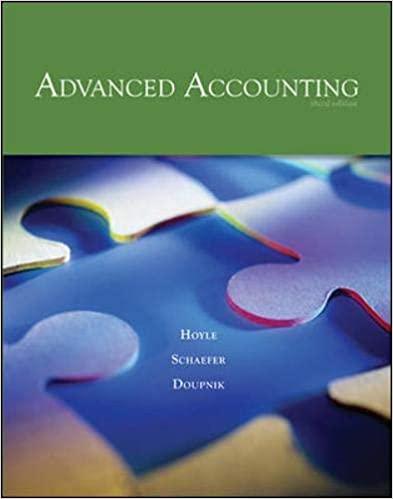The following information concerns two different partnerships. These problems should be viewed as independent situations. Part A
Question:
The following information concerns two different partnerships. These problems should be viewed as independent situations.
Part A The partnership of Ross, Milburn, and Thomas has the following account balances:
Cash.$ 36,000 Liabilities.$17,000 LO6 Noncash assets. 100,000 Ross, capital. 69,000 Milburn, capital. (8,000) (deficit)
Thomas, capital. 58,000 This partnership is being liquidated. Ross and Milburn are each entitled to 40 percent of all profits and losses with the remaining 20 percent to Thomas.
a. What is the maximum amount that Milburn might have to contribute to this partnership because of the deficit capital balance?
b. How should the $ 19,000 cash that is presently available in excess of liabilities be distributed?
c. If the noncash assets are sold for a total of $41,000, what is the minimum amount of cash that Thomas could receive?
Part B The partnership of Sampson, Klingon, Carton, and Romulan is being liquidated. It currently holds cash of $9,000 but no other assets. Liabilities amount to $24,000. The capital balances are as follows:
Sampson.$ 9,000 Klingon.(17,000)
Carton. 5,000 Romulan.(12,000)
Profits and losses are allocated on the following basis: Sampson, 40 percent, Klingon, 20 percent, Carton, 30 percent, and Romulan, 10 percent.
a. If both Klingon and Romulan are personally insolvent, how much money must Carton contribute to this partnership?
b. If only Romulan is personally insolvent, how much money must Klingon contribute? How will these funds be disbursed?
c. If only Klingon is personally insolvent, how much money should Sampson receive from the liquidation?
Step by Step Answer:

Advanced Accounting
ISBN: 9780073379456
9th Edition
Authors: Joe Ben Hoyle, Timothy S. Doupnik, Thomas F. Schaefer, Oe Ben Hoyle





